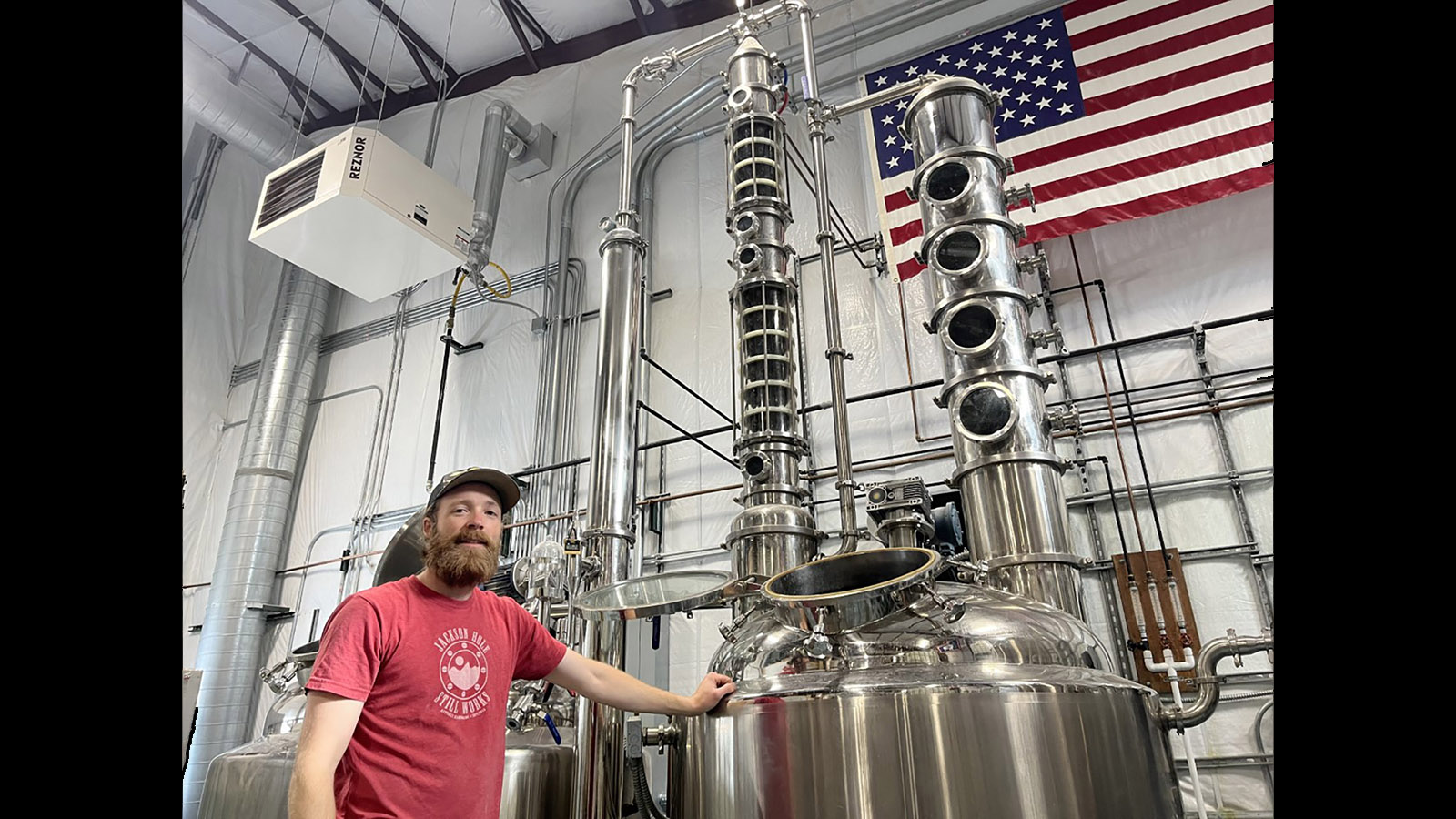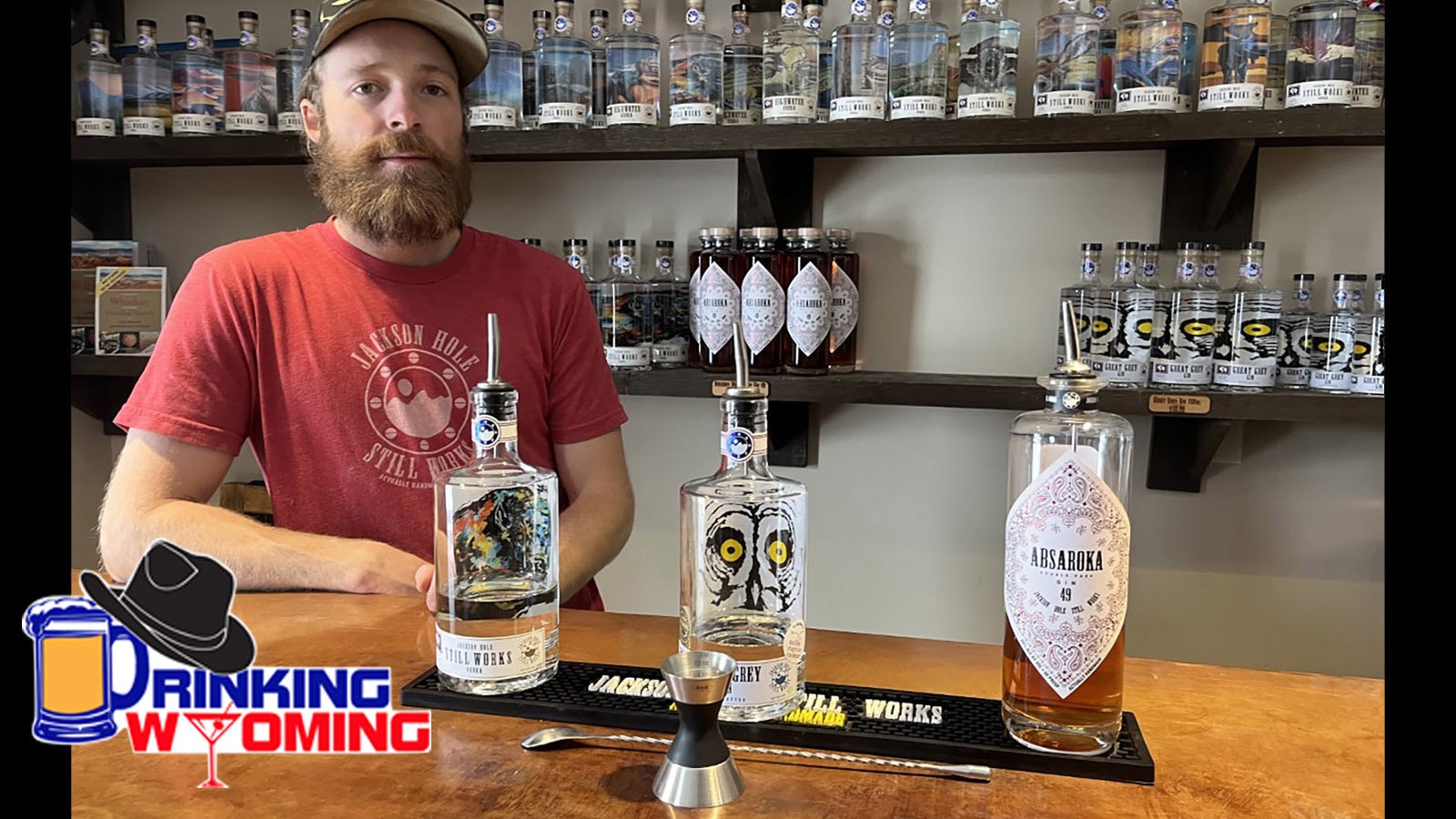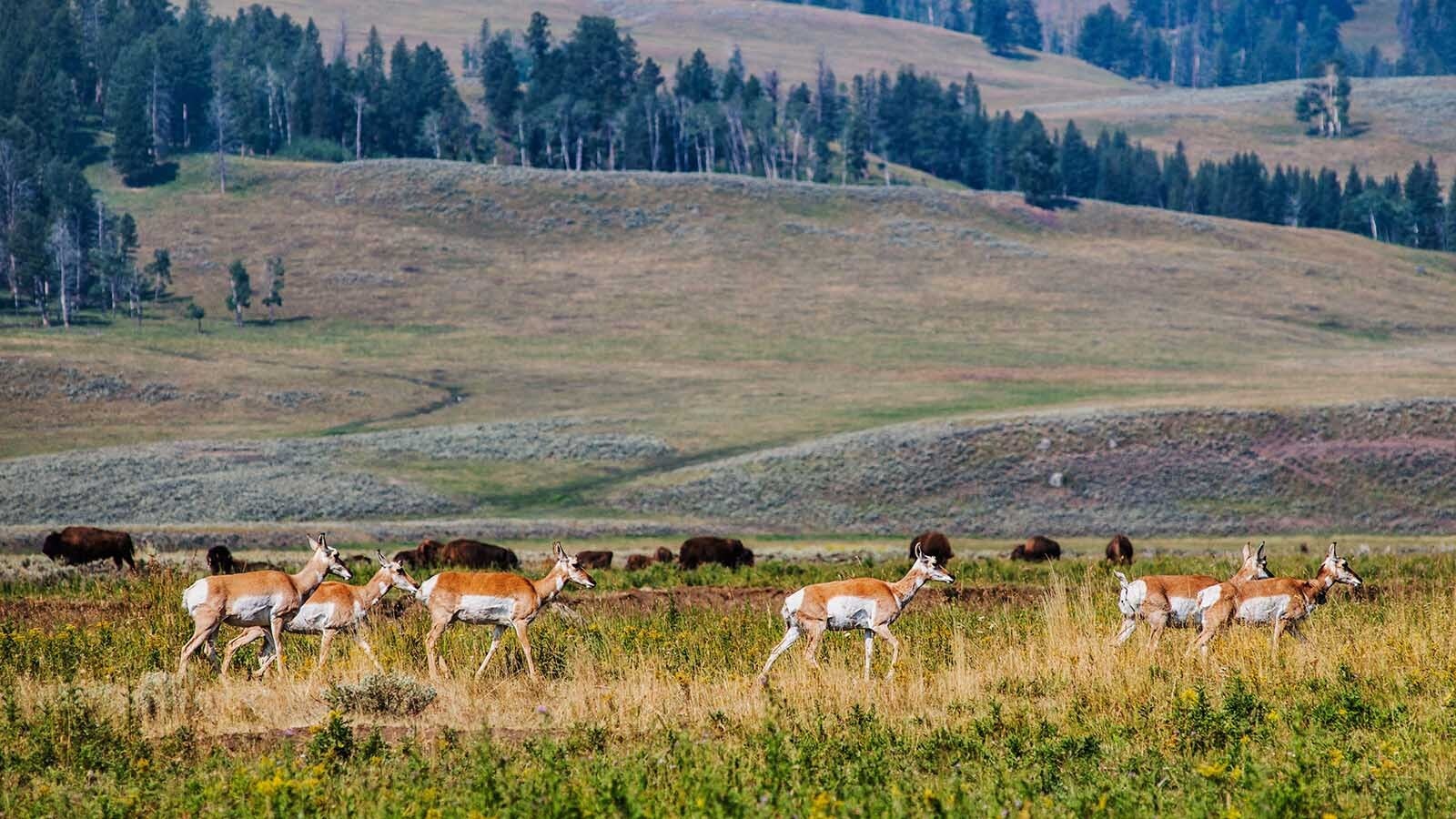By Leo Wolfson, State Cocktails Reporter
Leo@Cowboystatedaily.com
Walking into Jackson Hole Still Works, a peculiar smell wafts into my nose. It smelld almost like a stew, but not quite. I couldn’t put my finger on it.
Many breweries and distilleries offer food, games and other distractions, but Still Works is purely focused on production of its craft gin and vodka.
That’s not to say the folks there don’t welcome the public with open arms. The distillery has a small but inviting public space I found myself standing in on a chilly Thursday morning.
What looks like a large, unassuming warehouse from the outside, is anything but inside – a comfy retail space set into the backdrop of massive distilling equipment.
Within seconds, Mike Vallen and Erik Jacobson’s friendly demeanor made me feel at home.
Of course, they’re friendly for a reason: They love their jobs.
Vallen was a bartender before becoming head distiller, often working long into the early morning hours.
“It’s pretty nice being able to go home at a reasonable hour now,” he said with a chuckle.
Jacobson, an apprentice and assistant distiller, just started working at Still Works four weeks ago. It’s not a bad transition from his former job as a wildland firefighter.
“This job was like a midlife crisis for me,” he said. “My body was like, ‘Nope, can’t do the Forest Service anymore.’ So, I was like, ‘What am I going to do anymore?’ I was so happy when I saw the ad in the classifieds (for this).”




Into The Mix
Vallen manned the bar and first poured up a mini shot of 90-proof Great Grey Gin. I wouldn’t call myself a gin connoisseur, but I’ve dabbled with it before, enjoying the strong kick and woodsy juniper taste in certain flavors.
The piercing yellow eyes of the great grey owl on the bottle’s logo stared out at me as I sucked down the shot, but the gin quickly demanded my attention. My mouth was filled with hints of caramel and vanilla along with that sharp gin kick.
Next up was the Absaroka Double Cask Gin, a 98-proof blend of gin and whiskey. As the liquid crashed against my tastebuds, I was instantly hit with the whiskey flavor. But as the drink spilled down my throat I was left with a surprising gin aftertaste, mixed in with fruity botanical flavors.
It was unlike anything I had ever had before.
“It’s kind of like two sips in one experience,” Vallen said, adding that he makes many Manhattans and old fashions with the spirit.
He said it was their goal to balance the strong gin flavor with individually identifiable botanical flavors. The Cask Gin takes the longest to make, roughly an 18-month process.
Statewide Bond
Still Works is so much more than just a Jackson or Teton County business. Each year, the distillery invites Wyoming artists to submit their artwork to be used on their bottles for the next year in its Spirit of Wyoming Label contest.
Artists from all around the Cowboy State have won the competition, with Cheyenne claiming the last two, along with previous winners from Casper, Lander and Jackson. Although it wasn’t through the contest, the attention-grabbing white and black owl featured on the Great Grey bottle is the work of Jackson artist Katy Ann Fox.
Within every Still Works bottle are pure Wyoming ingredients. They source their corn from a farm in Byron and oats from Gluten Free Oats in Powell.
“That was kind of a big thing for us was if you’re going to have a local, small company. We really wanted to have the people that benefit from it be the people who drink it here, but also the people that supply us with equipment and our ingredients,” Vallen said.

The Process
As Vallen and Jacobson walk me through the distilling room, the space feels a lot like a mad scientist’s lab, filled with cavernous cauldrons and large vats, although there are no bubbling test tubes or discarded human skulls laying around.
Vallen explains that the process of making vodka and gin is fairly similar to brewing beer, it’s just a little quicker and lacks the addition of hops.
“We’re basically beer brewers that then take it one step further,” he said. “We extract that alcohol from our “beer” and that is what then becomes vodka, gin and barrel aged gin.”
In their 1,500-gallon mash tun, they cook a blend of 90% corn and 10% oats. They start by taking whole grains, corn and oats and mill them into a flour, blending them into a soup-like consistency.
“The idea behind that is we are taking the starches in our corn and our oats and we’re breaking them down into sugars, like a simpler form,” Vallen said.
He gives me a taste. It’s a little bland but not horrible. With some salt and pepper I would eat it off my stovetop.
A Yeast Feast
The sugars are then poured into a fermenter where the yeast feasts on them for seven days. By the end of the week, the yeast will have converted the sugars to carbon dioxide, heat and most importantly, alcohol.
Still Works owners Chas Marsh and Travis Goodman initially considered opening the business as a brewery, then opted for a distillery in 2016 when considering how oversaturated the brewery market is.
“They’re just kind of trying to think a little bit more forward on what the next boom would be,” Vallen said. “Craft stores are a lot more popular now. I think that has kind of caught on into the same sort of interest that people have for breweries.”

‘Bottling Parties’
Marsh, Goodman, Vallen and Jacobson are the only employees at Still Works, but they’ve got lots of friends and family that help them at “bottling parties,” where they package thousands of bottles to be sent to liquor stores all around Wyoming.
“You kind of have to become a jack-of-all-trades, sort of fixing equipment, making cocktails,” Vallen said. “Kind of working on your palate of what you’re smelling, what you’re tasting off the still. Running the recipes, managing the warehouse.”
Still Of The Night
In the middle of the distilling room, sits the still. The liquid is poured into the device and heated to a boiling temperature of 173 degrees. Through a submarine-like column, the alcohol rises to the top while the water, corn and oats filter out below.
As the water vapor hits the ceiling chamber of the tube, it condenses and falls back down. The process continues until the concentrate reaches 95% alcohol.
“Basically, the alcohol is going to boil and evaporate before the water dies,” Vallen said. “That alcohol in order to keep moving up, it needs to drop off water molecules to become more volatile, kind of less dense.”
This “spirit run” takes about 50 hours to complete, and Jackson Hole Still Works does about 22 spirit runs a year.
“Someone has to be here the whole time for that,” Vallen said.
Once it has reached the right consistency, the alcohol is twice filtered before being bottled.
Mature 4-5 years
“It’s a pretty difficult industry,” Vallen said. “Sales are always tough because you’re the small guy.”
Still Works also is developing its own blend of pure whiskeys, but they’re in no rush to unveil them.
Stacked like Legos in one corner of the distilling room are about 150 barrels, slow-marinating the future whiskey blend.
“We believe in making it all from scratch and letting those whiskeys mature for four or five years,” Vallen said. “We just want to release the kind of the best product we can for mature whiskey.”
Although they don’t offer seating, Still Works sells its products out of the manufacturing facility, hosts free tastings and gives tours year-round.
“Once you give them a taste of the spirit, it kind of speaks for itself and you can kind of win over a customer for life,” Vallen said.
Adult Slushies
Also very popular with locals are the “sloshies,” grab-and-go slushies that come with gin or vodka mixed with a variety of flavors. In the winter, they also offer warm hard cider and chai tea drinks.
As I’m about to leave, I finally identify the smell I encountered while entering the building. It’s the simmering corn and oat mash.
“We added that in probably an hour before you got here,” Vallen explained.
With stories still left to write for the day, I express concern to Jacobson that a pineapple and serrano pepper-infused vodka sloshie might be a little strong for a midday pick-me-up. He laughs and says as long as I keep it at one, I’ll be alright.
“After two, things get kind of hazy,” he said.
And he was right. I sipped on the subtle but potent frozen drink for the rest of the afternoon as my fingers typed away my next great American novel.





